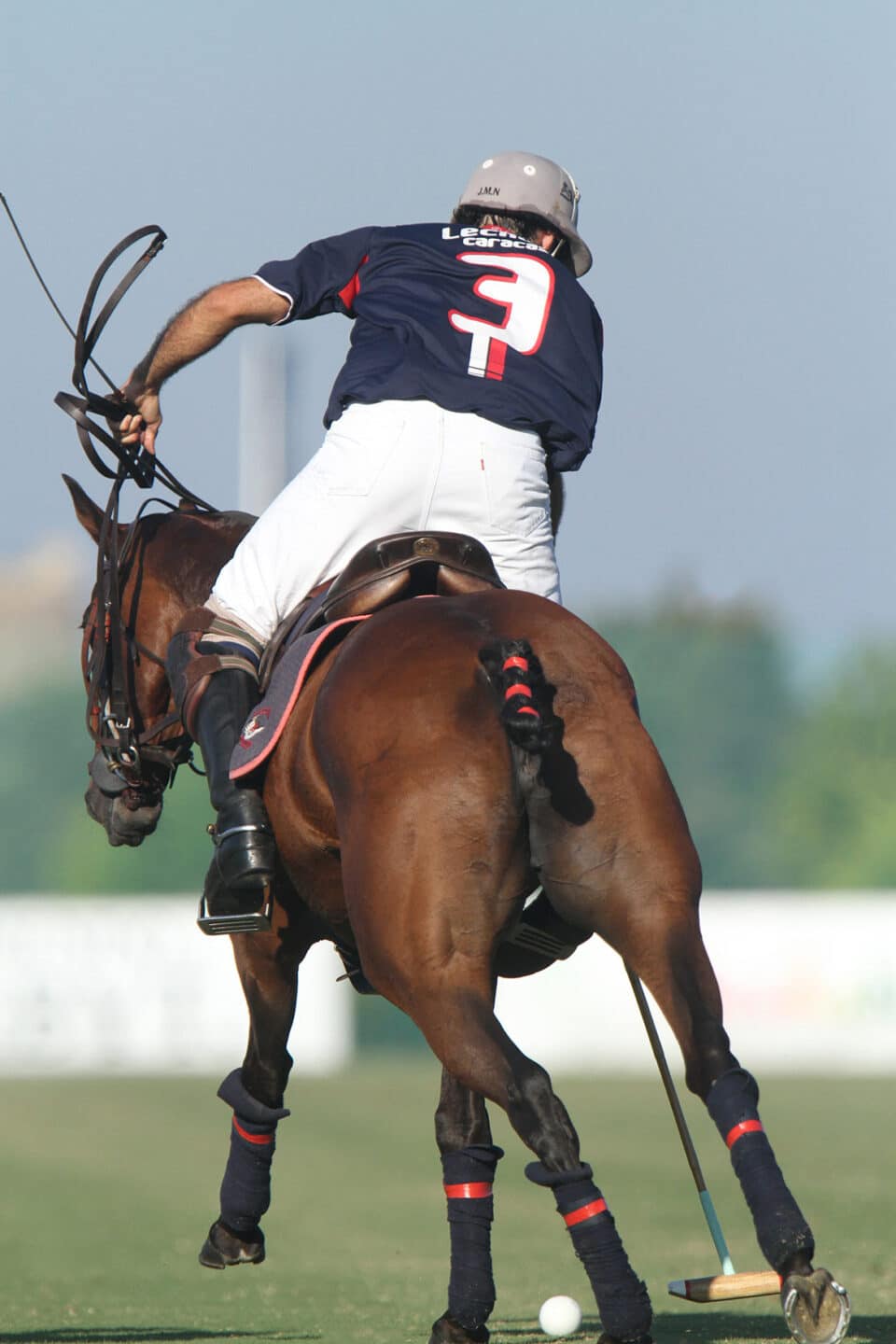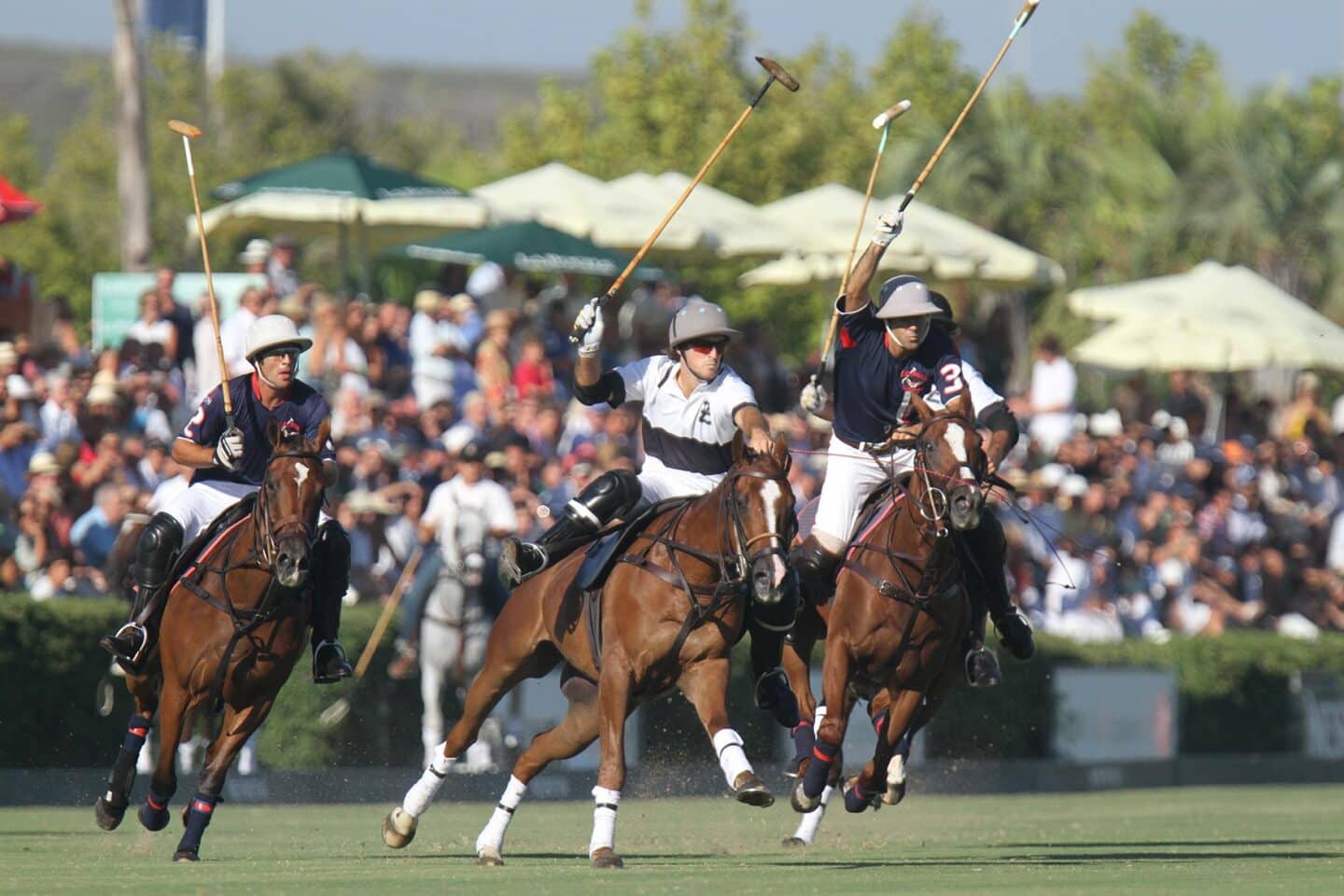Polo came to Sotogrande in 1964 when the Filipino entrepreneur Enrique Zóbel built the first polo field for the exclusive holiday resort established by his uncle Joseph McMicking. Polo has developed hand in hand with Sotogrande, and today, the area houses three polo clubs that work closely together: Santa Maria, Dos Lunas and Ayala, the last mentioned run by Enrique Zóbel’s granddaughter Paola Zóbel.
Santa Maria Polo Club is one of the most prestigious polo clubs in the world. The club has hosted for decades Europe’s largest international Grand Slam polo tournament whose cups will be held in Palm Beach, Windsor and Palermo, Argentina, in addition to Sotogrande. Also this year, the tournament will be held at the premises of the Santa Maria Polo Club, but this time it will be hosted by the Ayala Club.
“You can see the world’s best polo played here in August. And the mood in our beachside locations will be incredible during the tournament. I am so proud that we have the opportunity to organise elite international polo events,” says Antonio Ortiz, President of the Santa Maria Polo Club.
Polo tournaments are high society events where guests come to make an appearance, dressed to the nines and ready to mingle. It is possible to spot celebrities like Prince Harry among the spectators.

Show jumping replaces polo in winter
The polo season lasts from March to October. As polo is played on a grassy field, the sport is not suitable for winter when the grass can be slippery and dangerous because of rain. However, Santa Maria is open year-round.
“In the winter, our facilities are home to the Santa Maria Equestrian Club and we organise regular show jumping competitions. Many foreign show jumpers come here to practice, but we have room for even more!” Ortiz says.
Santa Maria Equestrian Club is a equestrian centre with a vocation of exclusivity, excellence and service, providing facilities that meet the most demanding standards of sporting and functional quality. The main period of activity is in winter, but the Club is also active all year round, so much so that several of the national show jumping competitions are held in summer.
Sotogrande’s summer is packed with events. The Ayala Polo Club has three fields suitable for professional use, and the Santa Maria Polo Club has as many as seven. In addition to the international tournament, more than thirty others are organised during the polo season.
Why not try some polo?
Sotogrande and its nearby areas are home to a lot of polo players, but Santa Maria also welcomes people who are new to the sport. Polo is an expensive sport as the fast-tempo game is hard on the horses, and players need to have at least four horses on hand during a game. Players at the top level need to have as many as ten.
“Players can hire a coach who can provide rental horses, and we rent out stables and a field, which gives beginners a good start in the sport. Our facilities are first class, and we welcome an array of people from Middle Eastern sheiks to wealthy English and American players. Sotogrande truly brings together the sport’s international names.” Ortiz exclaims.
In Ayala, people interested in polo are also encouraged to take a chance and try out the sport. Paola Zóbel has worked hard to try to dispel the sport’s luxury label and, for example, has founded a polo school to help the game reach a much wider audience.

PHOTOS:
Due to polo’s fast tempo and the stress it places on the horse, players use at least five horses per match. At the top level, as many as ten horses might be needed.
Polo matches in Sotogrande usually have five or six seven-minute periods, or chukkas. A new horse is introduced after each chukka, even during the chukka, to avoid overexertion.
Sotogrande brings together polo’s international names.
POLO IN A NUTSHELL
Polo is played in two teams of four members. The aim is to steer the ball along the ground into the opposing team’s goal using a long-shafted mallet.
The polo field is large; it fits around five football fields. The grassy field is divided into two parts and the goals are located at either end. Polo matches usually have six or eight seven-minute periods, or chukkas. A new horse is introduced after each chukka to avoid overexertion.
The game starts when the ball is thrown onto the field. Then, each team attempts to gain possession of the ball and score goals. The players sometimes collide with each other to get the ball or disrupt another player, but dangerous riding and unsportsmanlike behaviour are forbidden.
Polo is a very fast-paced game that requires horsemanship, skill in using the mallet, strategic thinking and good team spirit. The game ends when all of the chukkas have been played.





